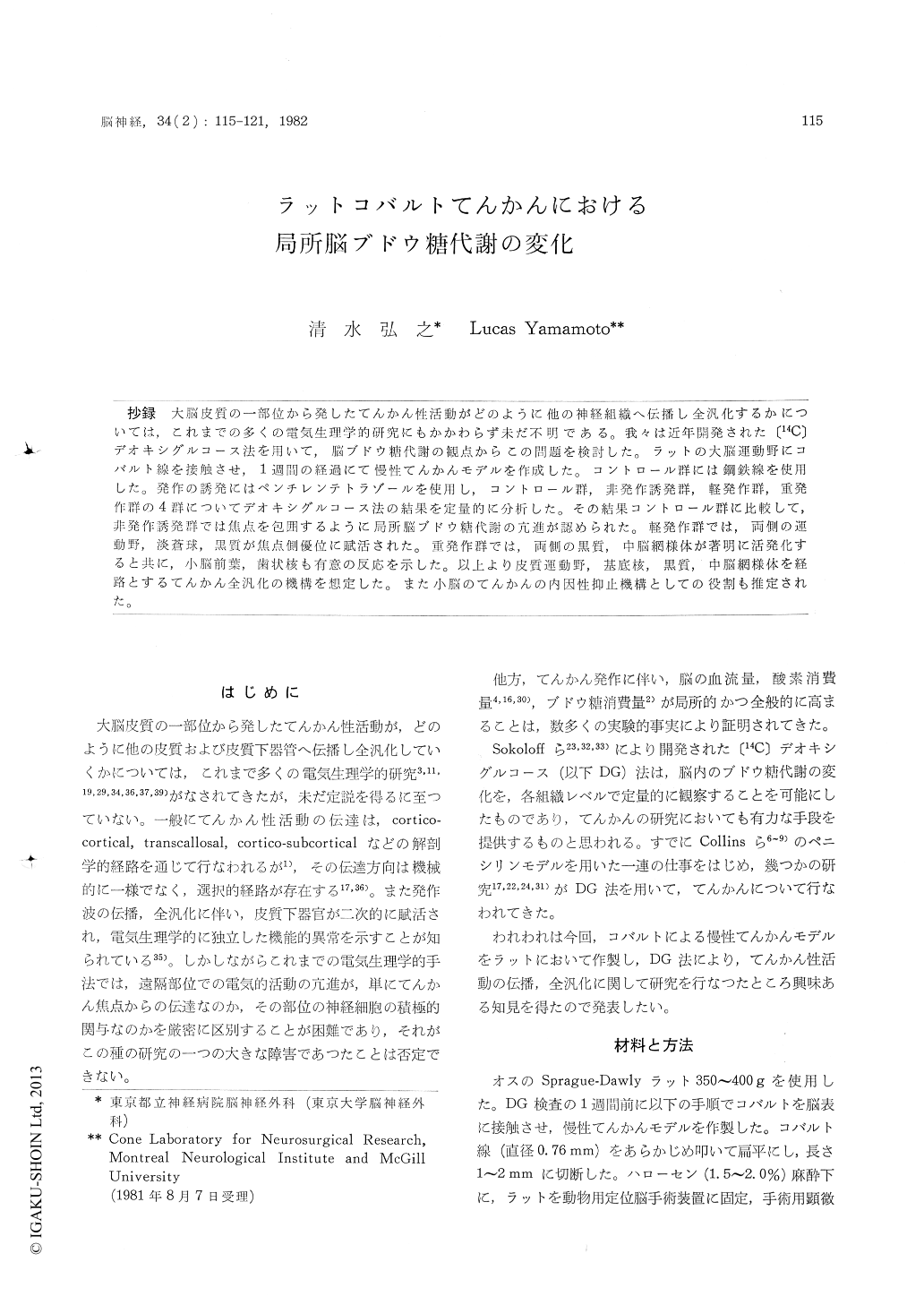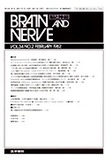Japanese
English
- 有料閲覧
- Abstract 文献概要
- 1ページ目 Look Inside
抄録 大脳皮質の一部位から発したてんかん性活動がどのように他の神経組織へ伝播し全汎化するかについては,これまでの多くの電気生理学的研究にもかかわらず未だ不明である。我々は近年開発された〔14C〕デオキシグルコース法を用いて,脳ブドウ糖代謝の観点からこの問題を検討した。 ラットの大脳運動野にコバルト線を接触させ,1週間の経過にて慢性てんかんモデルを作成した。コントロール群には鋼鉄線を使用した。発作の誘発にはペンチレンテトラゾールを使用し,コントロール群,非発作誘発群,軽発作群,重発作群の4群についてデオキシグルコース法の結果を定量的に分析した。その結果コントロール群に比較して,非発作誘発群では焦点を包囲するように局所脳ブドウ糖代謝の亢進が認められた。軽発作群では,両側の運動野,淡蒼球,黒質が焦点側優位に賦活された。重発作群では,両側の黒質,中脳網様体が著明に活発化すると共に,小脳前葉,歯状核も有意の反応を示した。以上より皮質運動野,基底核,黒質,中脳網様体を経路とするてんかん全汎化の機構を想定した。また小脳のてんかんの内因性抑止機構としての役割も推定された。
A chronic epilepsy model was made by placing cobalt wire on the rat motor cortex. A week after cobalt application, electroencephalography showed active spike activity around the focus. To study the mechanisms in spread and generalization ofepileptic activity, deoxyglucose method was applied in cobalt and in control rats. In control rats (n=5), steel wire was used in stead of cobalt. In some of cobalt rats, clinical seizure was induced by in-travenous injection of pentylenetetrazole. Cobalt rats were consequently divided into three groups : none-induced (n=5), mild seizure (n=5), and severe seizure (n=4) groups. In cobalt rats (non-induced), local cerebral glucose utilization (LCGU) increased in a U-shaped form around the focus but no par-ticular changes were observed in other areas com-pared with the control group. In the mild seizure group in which seizure was mainly unilateral, the pallidum and substantia nigra showed activaton of LCGU dominantly on the focus side. In the severe seizure group with bilateral involvement, increased LCGU was observed in the midbrain and cerebel-lum. Especially the midbrain reticular formation showed prominent involvement compared with the mild seizure group.
Taking account of the previous reports and the anatomical fiber connection in the rat brain, the following pathways of epileptic spread were specu-lated. Seizure discharges from unilateral motor cortex first spread to the basal ganglia and thalmus resulting in the maximum activation of the globus pallidus, from where the epileptiform activity is further transmitted to the subthalamus, substantia nigra and midbrain reticular formation. In second-ary generalization of seizure activity, the midbrain reticular formation seems to play a key role. The cerebellum may function as the intrinsic inhibitory system suggested by the previous literatures.

Copyright © 1982, Igaku-Shoin Ltd. All rights reserved.


